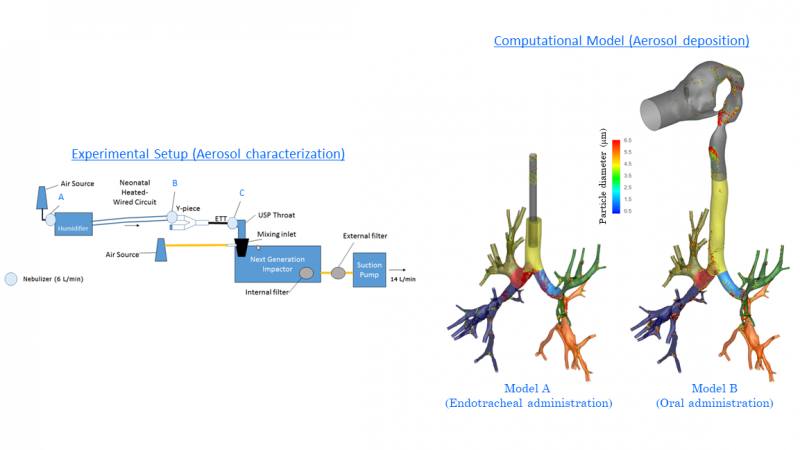
Collaboration with University of Arkansas for Medical Sciences vital to safety of ventilator-based treatment
Patients on ventilators who have some pulmonary conditions relevant to COVID-19 with underlying chronic lung diseases will often receive drugs like albuterol through an endotracheal tube. This treatment relaxes the bronchial muscles and improves airflow to the constricted lung airways.
Ariel Berlinski and his group conducted aerosol characterization experiments at the University of Arkansas. Rahul Rajendran, a new Lehigh PhD, used the results to investigate drug delivery through computations.
“The research objective was to evaluate the efficiency of drug delivery when the nebulizer type and its placement were varied in the ventilator circuit,” said Arindam Banerjee, a member of the group and a professor of mechanical engineering and mechanics at Lehigh's P.C. Rossin College of Engineering and Applied Science.
The researchers found that a vibrating mesh (rather than a jet) nebulizer placed on the dry side of the humidifier delivers the highest dose to the lung. Administering albuterol through intubation works most effectively for smaller particles, while oral administration is more efficient for larger particles.
“Our results are vital for mechanical ventilator based treatment,” said Banerjee.
The team gave a virtual talk on their work "Albuterol Delivery Through An Adult Ventilator Circuit To A Patient-Specific Tracheobronchial Airway Model" during the 73rd Annual Meeting of the APS Division of Fluid Dynamics (November 22–24, 2020).

